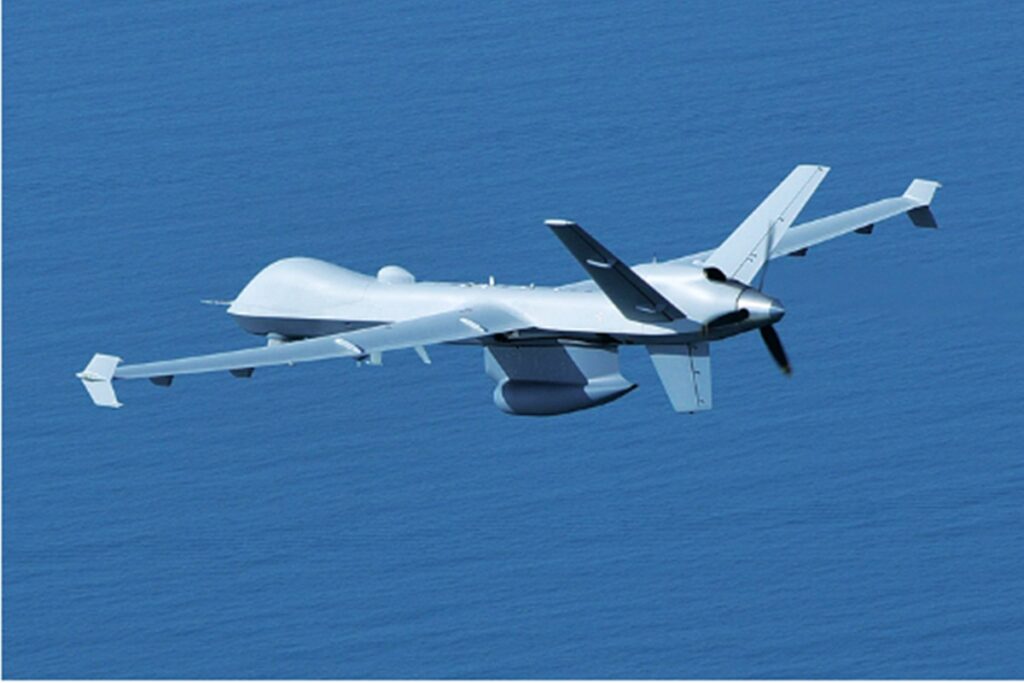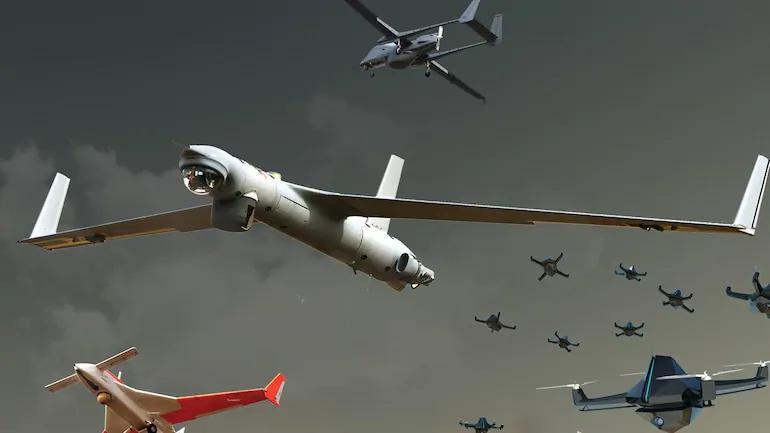On 16th April, the Indian Navy rescued the hijacked Bulgarian bulk carrier ship MV Ruen from the Somali pirates who hijacked the vessel in December of 2023. The Navy in a 40-hour-long operation forced to surrender the 35 pirates inhabiting it and rescued 17 hostages, approximately 1700 nautical miles from the Indian coasts. In coordination with INS Subhadra, the navy ship INS Kolkata conducted the operation using High Altitude Long Endurance RPA (HALE RPA) drones and P8I Marine aircraft along with eight MARCOS commandos. This garnered praise for the Indian Navy and highlighted its technical capabilities, especially in using drones and UAVs.

Drones or UAVs (Unmanned Aerial Vehicles) have long been a vantage point in contemporary warfare. Its usage has seeped into every aspect of modern warfare by being integrated into both reconnaissance and aggression. Be it in Europe or the Middle East drones are changing the war as we know it and this process is only growing multifold as new advancements are happening in this sector.
Drones In Today’s Warfare
The landscape of modern warfare changed when the USA deployed its Predator Drone, the first-ever combat drone, on suspected Al Qaeda leaders in Afghanistan in November of 2001. The verdict of the American war in the Middle East was dominated by the targeted killing of UAVs. However, usage of these was very restricted and controlled mainly by the United States and unavailable for small states and non-state actors. Though some powerful actors dipped their toes into combat drone development, it was still not used in mass. However, the world has taken notice of the outcomes of drone warfare.
In the second decade of the twenty-first century, the world rode towards massive instability. After the global pandemic regional conflict rose and there, we saw mass usage of drones in aerial combat.
The Bayraktar TB2 drones, a Turkish-made aircraft manufactured by the Baykar Corporation, are cheap, widely available drones that have altered how smaller countries fight modern battles. Explosions in Armenia, streamed on YouTube in 2020, unveiled this new form of warfare to the globe. Azerbaijan’s military released these videos during the Second Nagorno-Karabakh War, which it launched against neighbouring Armenia on the same day. The footage was captured by the TB2. It also drew global notice in Ukraine in 2022 when it demonstrated its ability to hold back one of the world’s most powerful forces. The TB2 is built in Turkey from a mix of domestically made parts and parts sourced from international commercial markets. Widely available commercial tech makes this drone cheap and easy to manufacture. Since its launch, this drone has shown up in conflicts in Azerbaijan, Libya, Ethiopia, and now Ukraine.
Another angle to the usage of drones in combat is makeshift drones. These are the drones that are developed by interested parties from freely available commercial drones that are used for other purposes. For example, the DGI Mavic drones that are built for video shooting, are used for combat and reconnaissance after modification in Burkina Faso and the Donbas region of Ukraine. These cheap, good-enough drones that are free of export restrictions have given smaller nations the kind of air capabilities previously limited to great military powers.
The Iranian-made Shahed-136 and Russian Orlan-10 are the military-developed mass-market drones that are also being used massively in recent times.
Future of Drone Warfare
The current landscape of warfare is a fertile ground for rising military drone technology. And in the forefront of it is the ‘Swarm Drones’. A swarm drone is a large cluster (or multiple small clusters) of drones that operate remotely or autonomously, in tandem with each other to execute their mission. The use case of these drones can be misleading radar or executing a multifront overwhelming attack on a specific target such as tanks, infantry combat vehicles, ammunition holding areas, fuel dumps and launch pads. The relatively small size and large number make these swarm drones much more lethal than the traditional drones.
Adding to this the integration of AI into these drone clusters will multifold the capabilities of these drones in warzone. A precise strike with minimal error will be an easy feat. Minimal human intervention and an innovative attack strategy on the back of advanced algorithms will radically change the way we fight wars.
France, Russia, China, Spain, USA, UAE, Israel and India are some of the countries that are leading the development of such swarm drones. Icarus Project of France, the Russian Lightning Project, the Spanish RAPAZ, the UK’s Blue Bearswarm, UAE’s N-Raven, Israel’s Sky Striker and the USA’s Kamikaze drone swarm are some of the Swarm drone projects all over the world.
READ: History of Drone Warfare
India Drone Defence
India for the first time on 15th Jan 2021 showcased its drone capabilities on the 73rd Army Day. In the demonstration, it showcased its drone capabilities, such as Kamikaze Drones, Quadcopters and hexacopters. During the display, targets representing hostile armor, dummy mortar positions, troop concentrations, fuel dumps, radar sites, terror hideouts, and helipads were hit. The drones were synchronized using satellite feeds and area correlation techniques. The larger hexacopters, known as motherships, launched child drones that oriented and aligned themselves based on target designations and optimized target trajectories using artificial intelligence algorithms operating on onboard flight computers.
On the Beating Retreat Ceremony of 29th Jan of 2022, India showcased its first-ever swarm drone display. With 1000 indigenously built swarm drones India became the fourth nation to develop its own swarm drones, making it a key player in the field of combat drone tech.
In 2023the Defense Research and Development Organization (DRDO) of India successfully tested its Stealth Wing Technology demonstrator (SWiFT) UAV prototype which was the scaled-down version of the indigenous combat UAV Ghatak. Apart from these the organisation also developing several other series of UAVs for multiple purposes with both independent and private corporations such as TAPAS-BH, Archer-Next Generation (NG), Short Range-UAV-Weaponized, Remotely Piloted Aircraft Systems (PRAS), and DRDO’s drone, detect, deter, and destroy (D4).
Several drone startups and private corporations also contributing to the military in the combat drone sector. The Indian Air Force recently awarded a contract to New Delhi-based start-up Veda Defense System for the production of 200 long-range swarm drones, fostering indigenous innovation and self-reliance. With the collaboration of Hindustan Aeronautics Limited (HAL), the force announced the development of the world’s first-of-its-kind transport UAV RUVA200.
On estimation, India is spending $6.3 billion on drone development since 2021. Apart from these it also signed a historic defence deal of $3.3 billion to import the lethal MQ- 9B Reaper drones with the USA. The drones will be assembled in India and Maintenance Repair and Overhaul (MRO) facilities will be opened for this purpose by sharing technology.
Pakistan’s recent purchase of Turkish drones and China’s advancements in both commercial and military drone sectors, puts India in a tough spot to keep up. However, India’s recent strides have shown the world that it is indeed ready for Drone Warfare.

